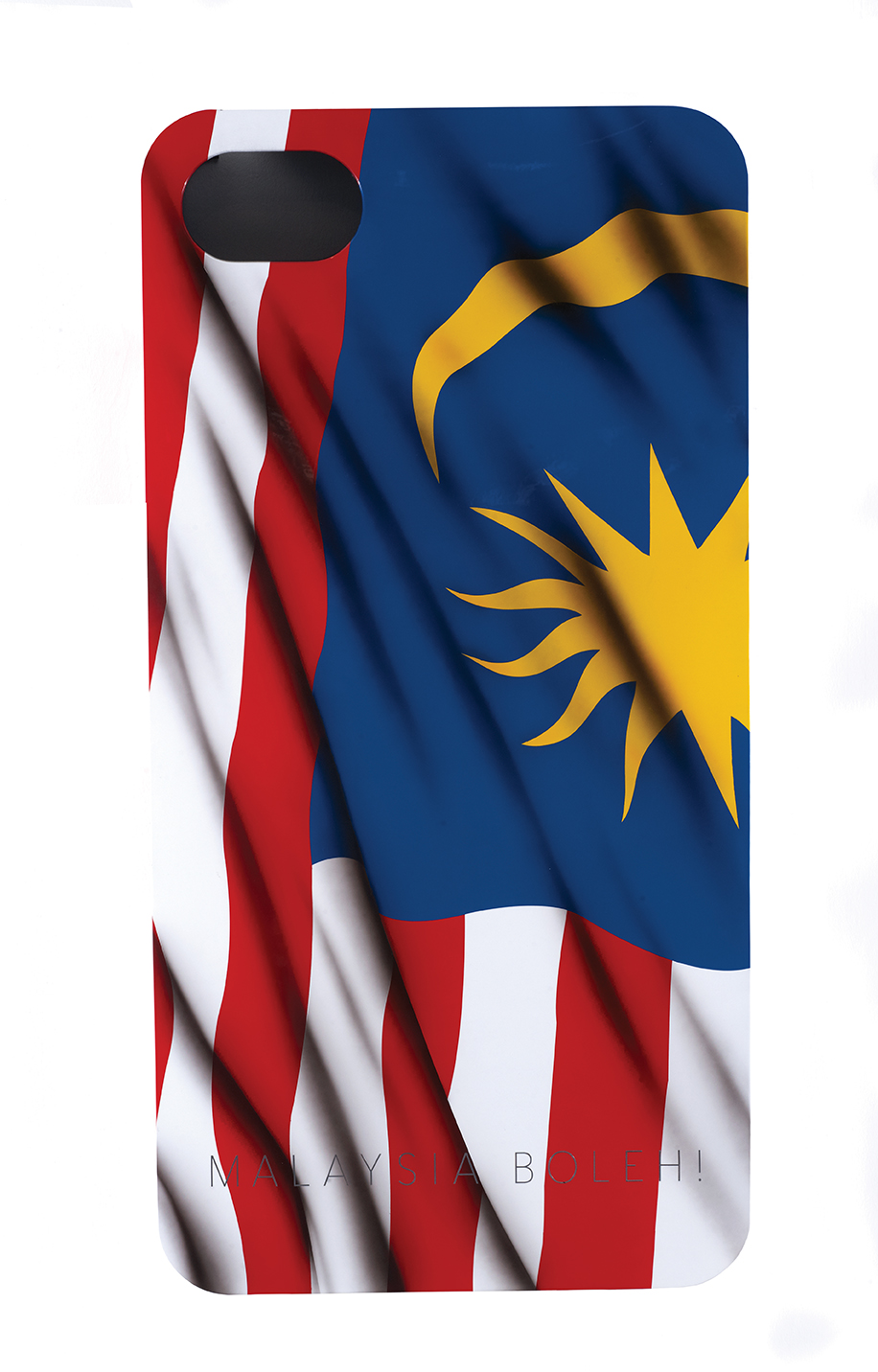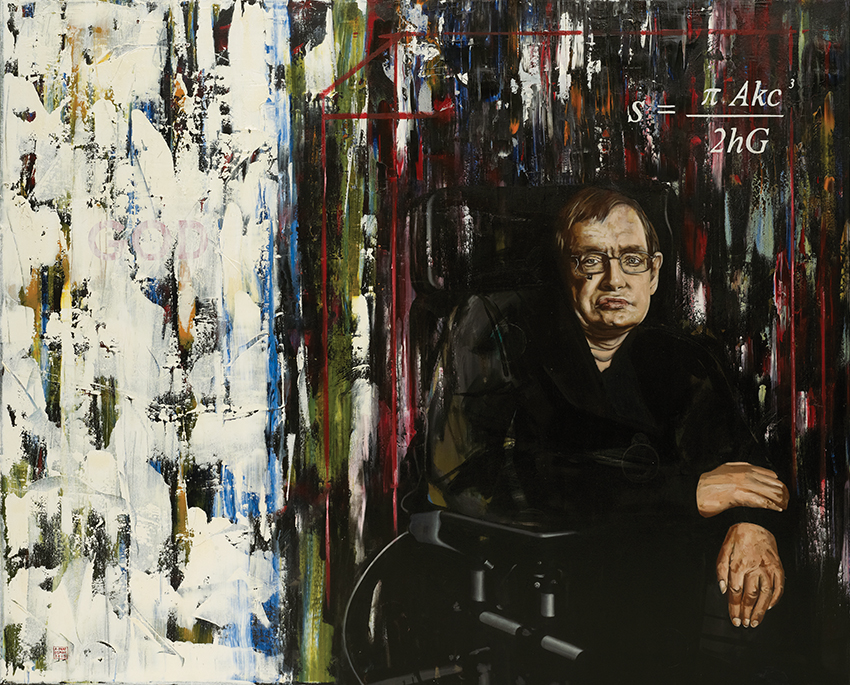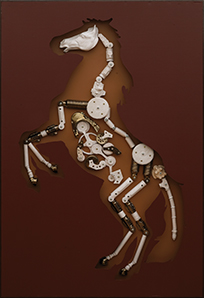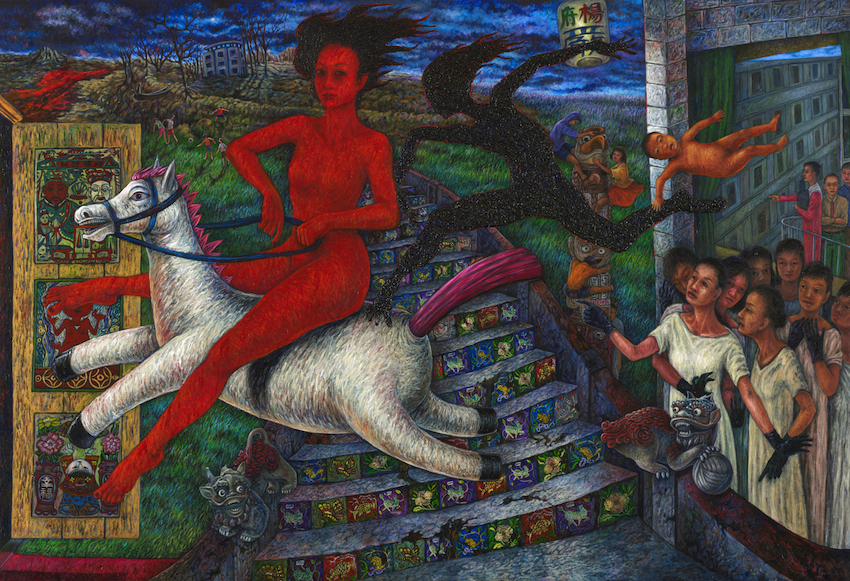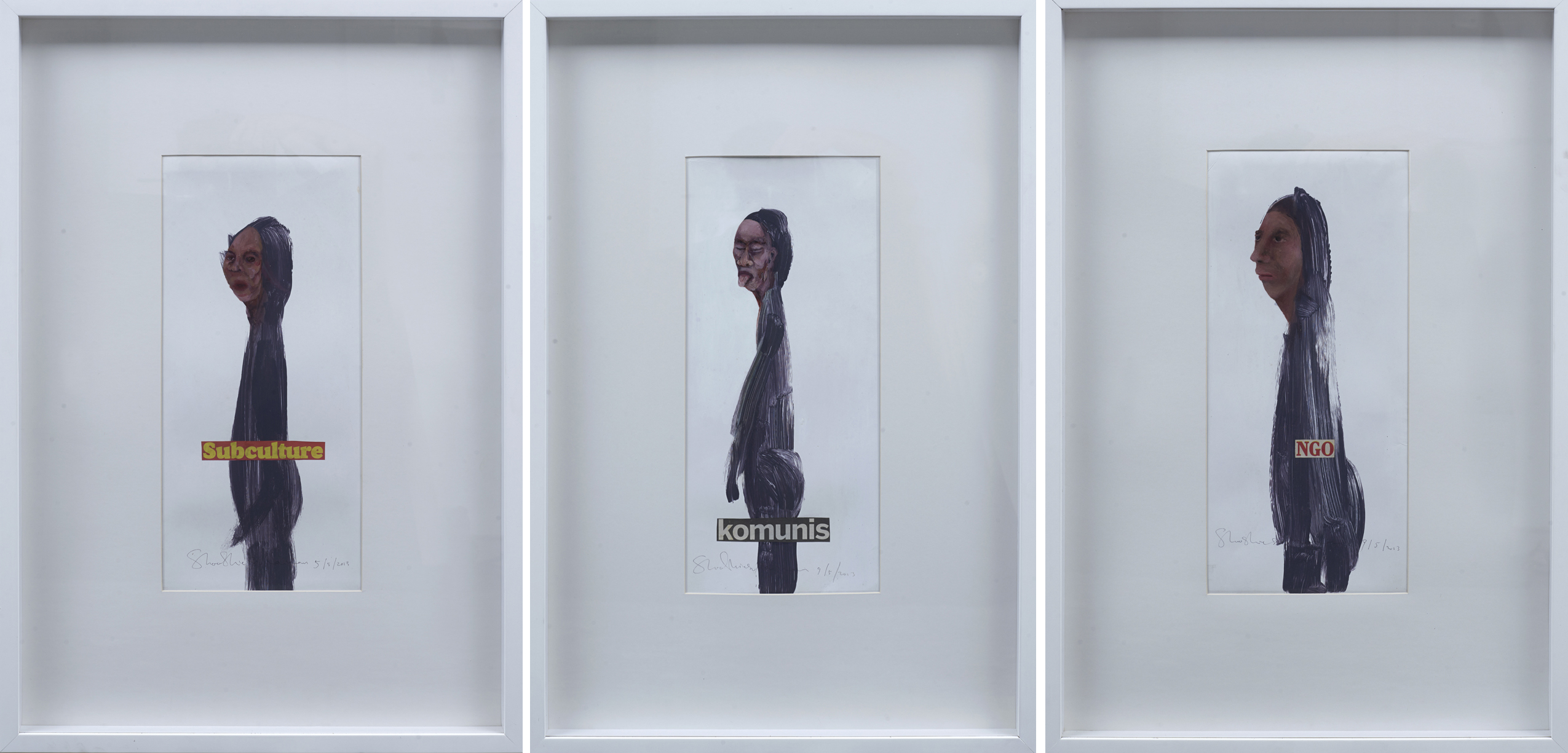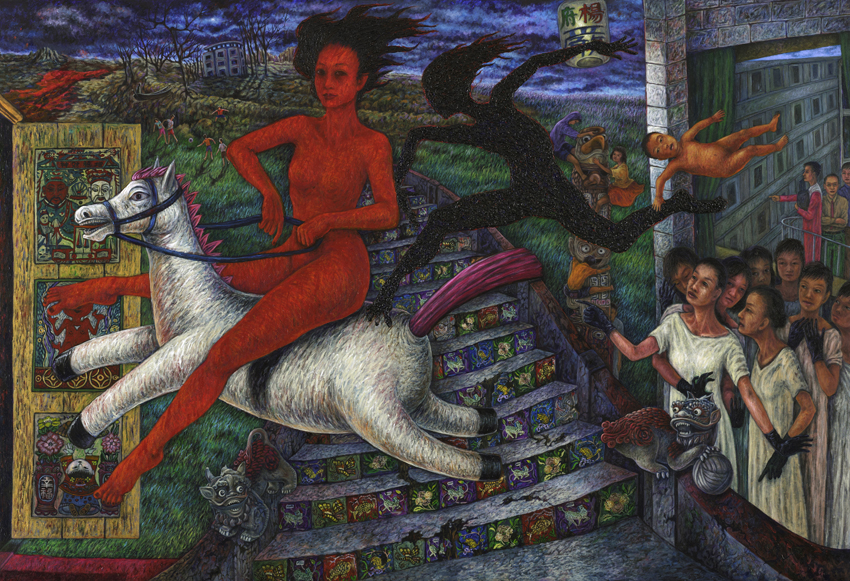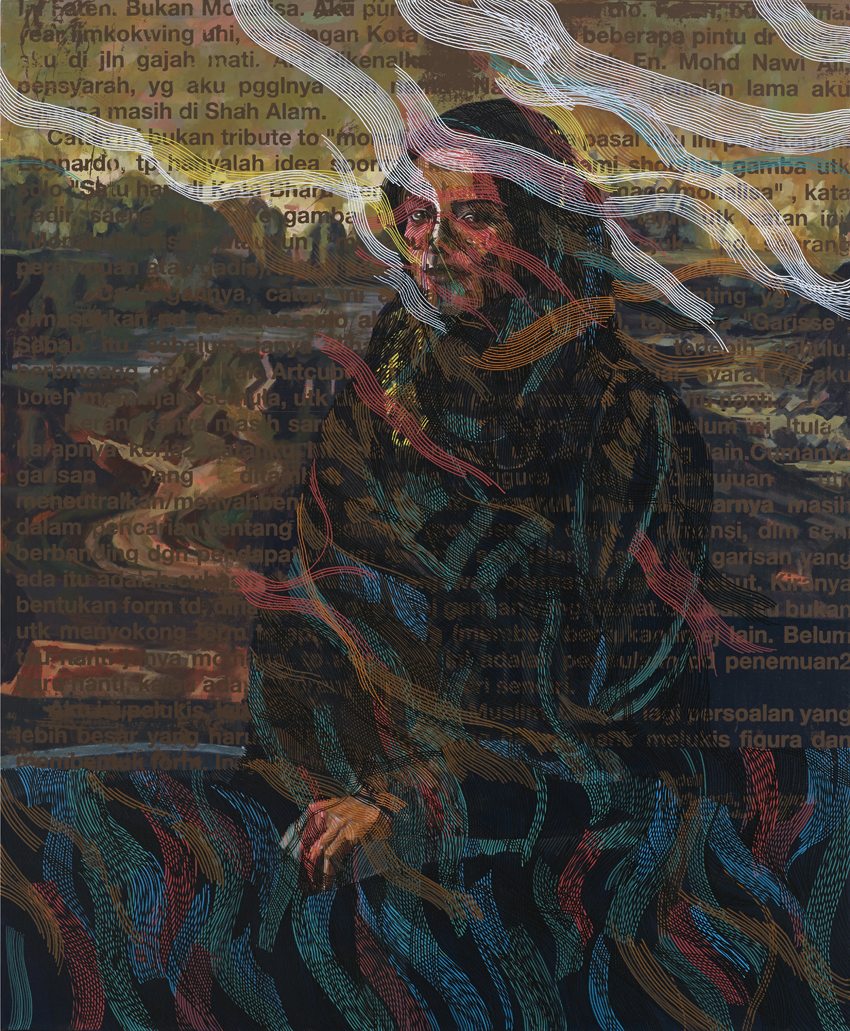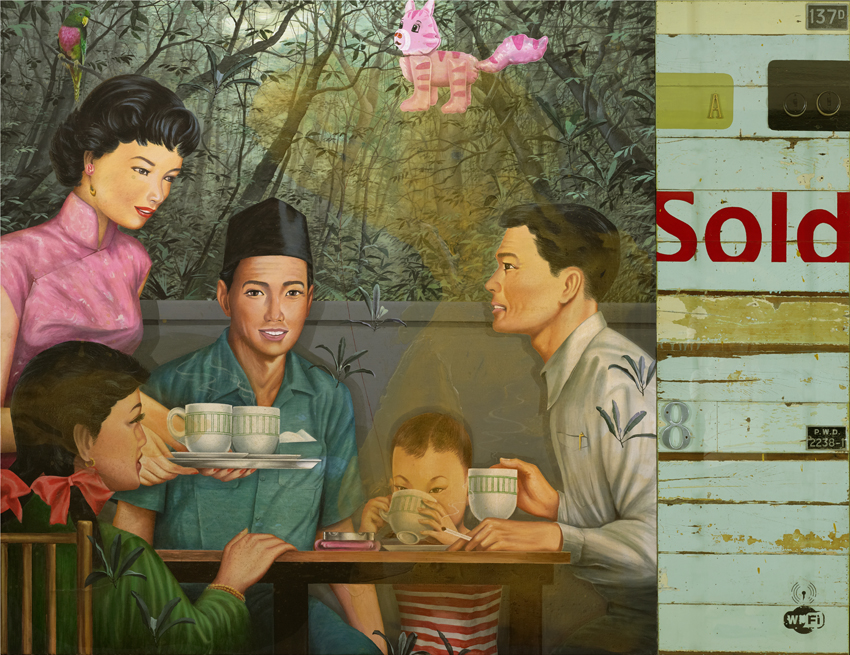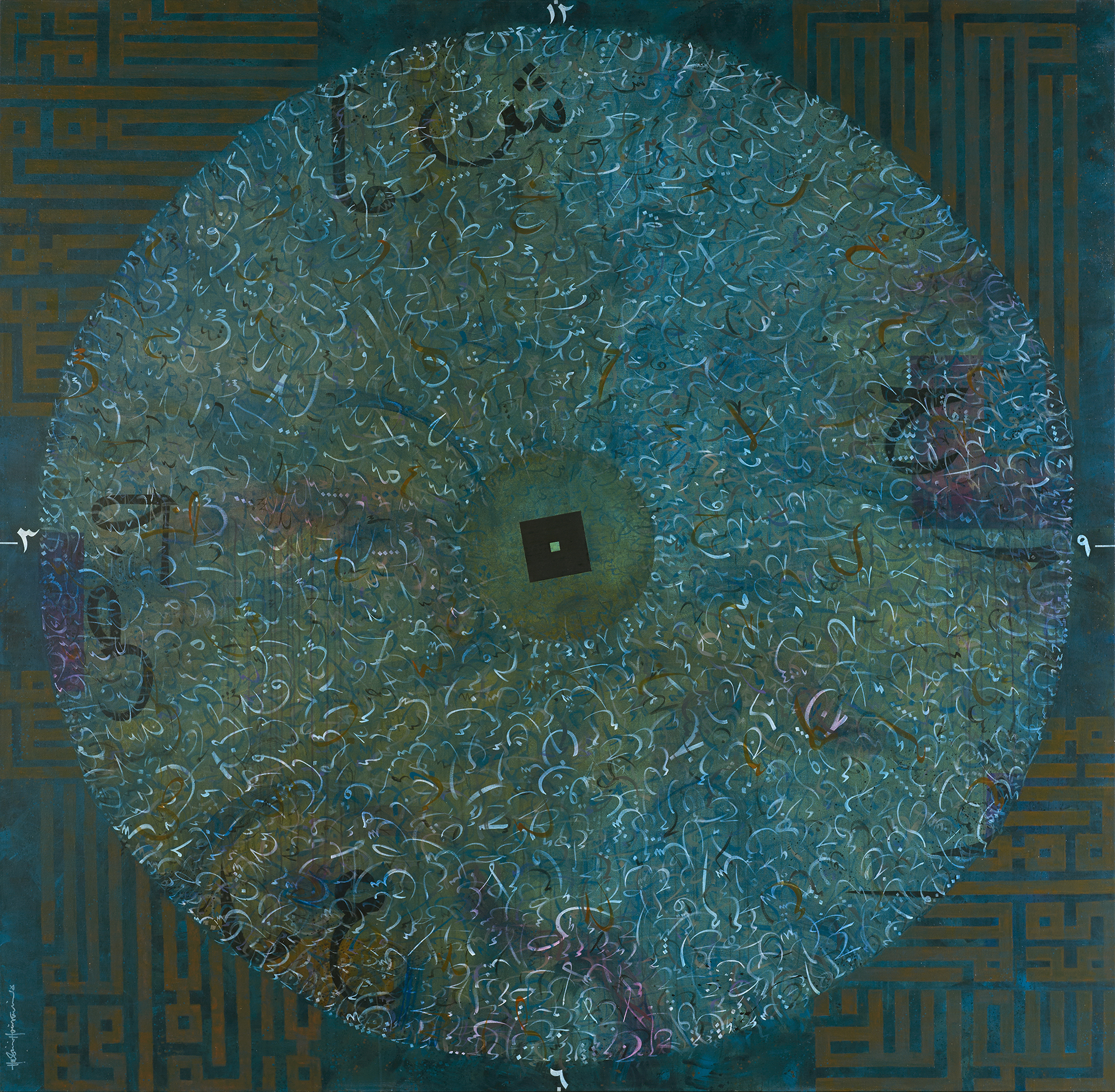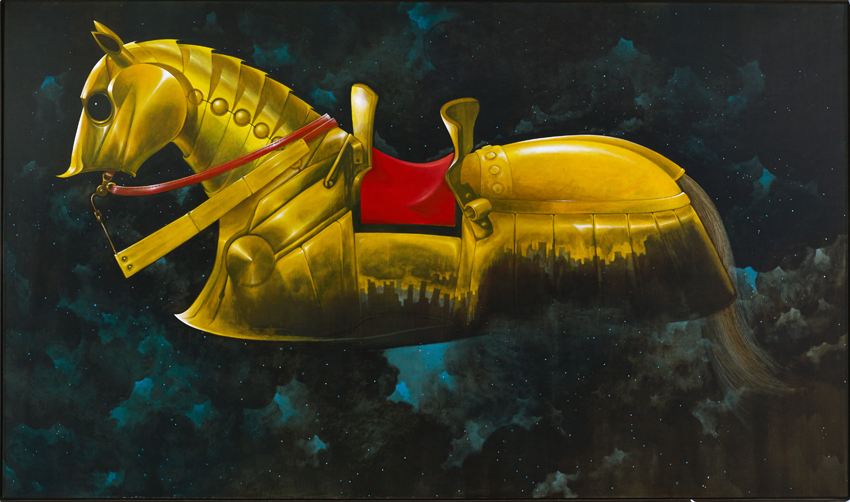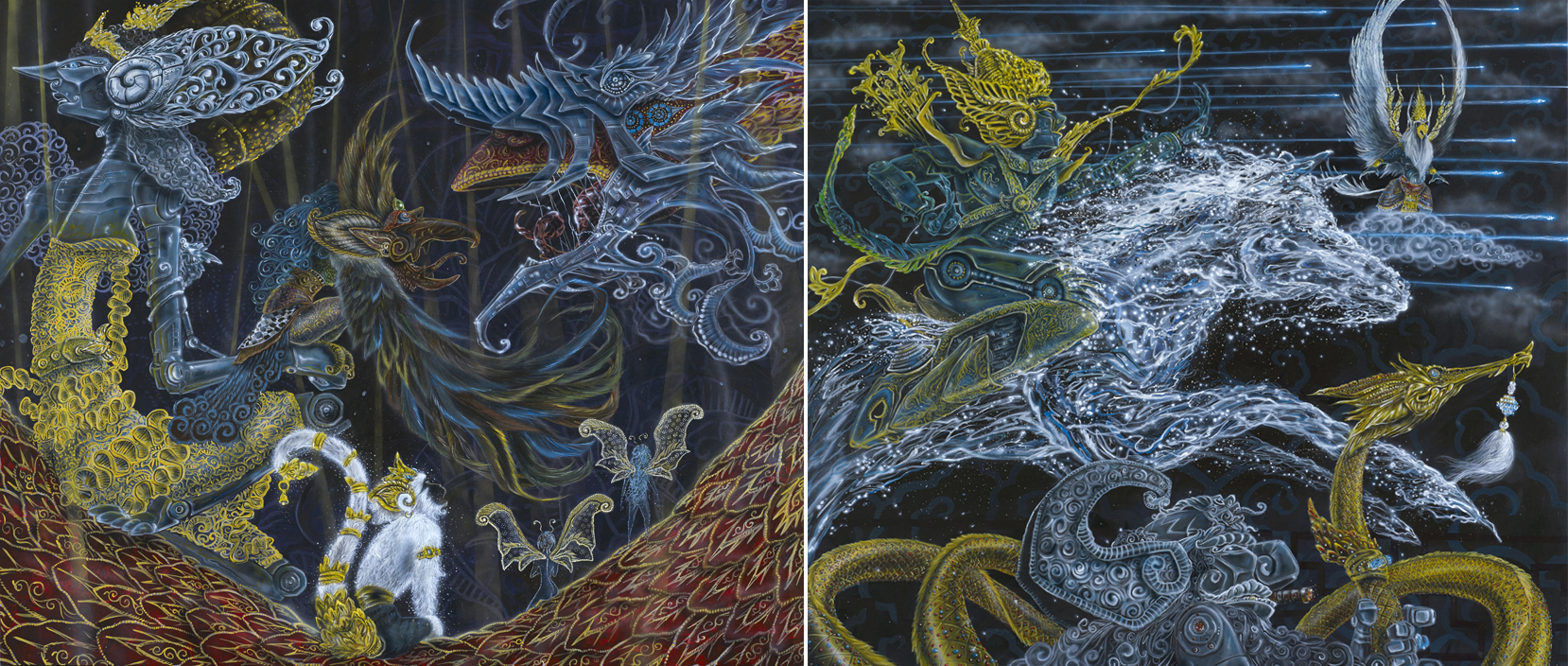The Great Malaysia Contemporary Art Show, or GMCA as it is affectionately termed, returns for a second year in Art Expo 2014. Akin to its inaugural 2013 show, GMCA aims to foster the concept of handpicking artists based on their critical value and showcasing a manner of mediums from painting to installation – thus transcending the limitations of regular local exhibits in both aesthetic and curatorial terms.
Written by Zena Khan
An exhibition that brings together explosively talented and critically acclaimed contemporary Malaysian artists, The Great Malaysian Contemporary Art Show, or GMCA as it is affectionately termed, returns for a second year in Art Expo 2014. As was witnessed in its inaugural 2013 show, the GMCA aims to foster the concept of handpicking artists based on their critical value and showcasing a manner of mediums from painting to installation – thus transcending the limitations of regular local exhibits in both aesthetic and curatorial terms. Not only does the GMCA present works by the most exciting critical contemporary Malaysian artists, it also seeks to provide documentation and context on the art shown, thus creating an environment which allows the Malaysian public to appreciate and connect with the immense local talent.
The GMCA first launched in 2013, with a selection of thirteen artists, exhibited by Core Design Gallery and curated by Farouk Khan. Artcube and Core Design Gallery, two top contemporary Malaysian art galleries, have now joined forces to present the GMCA 2014 – an exhibit worthy of the artists shown. The impact of a super-sized, well-curated space is one that has never been seen before at Art Expo, and it was with this reason in mind that both galleries came together. It must be noted that Artcube and Core Design Gallery have been at the forefront of raising the documentation and representation within contemporary Malaysian art, and their innovative and professional approaches haves quickly set new standards within the industry, as is demonstrated by the quality of the GMCA 2014.
Meticulously curated, the GMCA 2014 focuses on contemporary Malaysian artists ranging from established to mid-career to emerging. The exhibition stems from the long-standing vision of collector Farouk Khan who noticed a disparity between commercially successful and critically acclaimed art in Malaysia. Farouk’s ability to contextualize art from both a local and international perspective has guided his curating to include those artists who set international level benchmarks within the Malaysian art industry. An example of this phenomenon is artist Susyilawati Sulaiman, who is arguably the most prominent contemporary Malaysian artist on the international art scene today. Famed for her narrative driven works which study constructions of identity from a highly personal starting point, Susyilawati has been extensively exhibited at key international events. These include the prestigious Documenta 12 (2007), Asia-Pacific Triennale in (2009-10), Singapore Biennale (2011), Florence Biennale (2003) and Continuities: Contemporary Art of Malaysia At The Turn of The 21st Century, Guangdong Museum of Art. 2014 brought with it an invitation to show at the Gwangju Biennale from Jessica Morgan, creative director of the biennale. Just as exciting has been Susyilawati’s inclusion at Art Basel Unlimited, where she has been described as South East Asia’s most important artist – an honour for both the artist herself as well as for Malaysia.
Disparities in critical acclaim and commercial success may be attributed to the fact that critical artists tend to make avant garde art. Working ahead of their time, these pieces appeal to a more developed and sophisticated art palate as opposed to decorative art, which tends to find quick success locally. Casting away the idea of equating art to pretty pictures means the GMCA is a much needed platform in which artists can express themselves and show the types of works which have garnered them international fame. One such example is with the artist Zulkifli Yusoff. Zulkifli is one of the foremost installation artists in the country and has been invited to participate in several important international exhibitions, most notably at the Venice Biennale in 1997. He has also shown at the Biennale of Visual Arts in Seychelles, the Fukoka Asian Art Exhibition in Japan, Immunity 11 show at Art Space, Sydney and the First Asia-Pacific Triennale in Brisbane, Australia. The lack of a local platform has led to Zulkifli exhibiting his key works outside of the country, but the curatorial vision of the GMCA now provides a local arena for his art to be showcased. The 2014 GMCA show will exhibit his latest large-scale installation, The Green Book. A piece from his series on Tun Abdul Razak’s speeches, it covers aspects of economics, politics and society within a Malaysian context.
Similar parallels can be drawn in the careers of Tan Chin Kuan and Eng Hwee Chu. Chin Kuan, an artist whose repertoire encompasses painting, sculpture, performance and installation, is well-known among curators and critics both in Malaysia and abroad. Not only has he displayed at the Gwangju Biennale (1995) and Osaka Triennale (1993 and 2001), he has also had a solo exhibition at the Fukoka Art Museum in Japan and won numerous prizes for his works. Both 1989 and 1990 saw him win the Major Award at the Young Contemporaries, National Art Gallery Kuala Lumpur, in 1991 he won the Minor Award at the Salon Malaysia 3 and in 2001 he was presented with the Bronze Prize at the Osaka Triennale. The critical endorsement from his plethora of awards and exhibits has earned Chin Kuan a place in museums such as the Fukoka Art Museum, The Osaka Prefectural Government & Osaka Foundation of Culture in Japan, The Singapore Art Museum and the National Art Gallery Malaysia. Again it is now here at the GMCA that Chin Kuan has found a space to present an artwork which fits in with his ethos of producing shockingly impressive art, to upset complacency and engage viewers in debate. Eng Hwee Chu is the wife of Chin Kuan and impressive in her own right. She is often described as a Malaysian Frida Kahlo for her surreal paintings filled with reflections of herself. Her autobiographical painting practice has earned her several important awards such as the Philip Morris ASEAN Art Awards (1994) and Painting Award at Salon Malaysia 3 (1991). Additionally, Hwee Chu has displayed at the Osaka Triennale (2001) and Asia-Pacific Triennale in Brisbane (1996).
Equally exciting are the works of Fauzin Mustafa and Mohd Noor Mahmud. These established artists demonstrate not only thorough understandings of fine art’s formalistic tenants but also innate understandings of the framework of Malay cultural identity. Both work in mixed media, demonstrating real flair for building up textural surfaces with the use of materials traditional and non-traditional materials such as cut canvas, batik, acrylic, sand and glue. Hearty helpings of references to symbols such as calligraphy, batik and Malay poetry render them as key players in bringing culture into forums of contemporary discourse and thus they are known as important visual documenters of heritage in a rapidly developing environment.
Blending similar inferences to heritage, society and patriotism with ultra modern materials such as neon lights and razor blades is Suhaimi Fadzir. Pioneer of a new type of assemblage, “archipainting”, Suhaimi uses his architectural training to understand spatial structures, assembling reliefs that present typically Malaysian artifacts in wholly current terms. This ability is prized with international curators, who increasingly look for cultural identifiers, and has earned Suhaimi invitations to show at the Dublin Biennale (2012) and Venice Biennale (Architecture) (2010, 2012). Additionally, he has had his works exhibited alongside famed photographer Ansel Adams, and has also shown at the world-renowned Saatchi Gallery.
Art has long had a responsibility to document society’s culture, whether through the use of cultural artifacts, as seen in the works of Fauzin and Mohd Noor, or icons to act as metaphors for social and political shifts, as seen in Hamir Soib’s epic paintings. Known for his mastery of oil paint, Hamir delights in developing new mediums within his painting focused practice. Of all his experiments, he is possibly best known for his innovations with bitumen, magically transforming the coal tar into a media which he can control with the finesse of paint. Hamir’s oversized proportions have captured the attentions of collectors, critics and artists alike; his influence is clearly present in the trend of large works that currently dominates Malaysia’s contemporary art scene. Hamir utilises his unparalleled skill and sharp insights to create large-scale socio-political commentary paintings. Having dedicated his career to the analysis of current events he affords his audience new ways of experiencing the world, resulting in an archive of paintings that have both artistic and social importance.
Hamir is not the only member of the notable Matahati collective to gain fame. Also on display at the GMCA is celebrated mixed media genius Ahmad Shukri, who has won the prestigious Philip Morris Award a stunning three times. Popular for his ability to present typically Malaysian elements in universal tones, Shukri skillfully connects discussions on cultural positions in global societies to his large audience. As a mixed media artist Shukri understands the value of layers, producing pieces heaving with strips of canvas, coatings of print and paint, to construct dynamic visuals. His stress on layering extends to the concepts within his art; Shukri studies the shifting values and attitudes of his quickly developing environment, linking various issues, events and thoughts together to produce art that has real intellectual depth.
Rounding off the Matahati representatives are multi-disciplinary artists Masnoor Ramli and Ahmad Fuad Osman. The increase in complex, multi-cultural societies globally has led to expansions in visual language, thus rendering multi-disciplinary artists as crucial to the progress of contemporary art, both in Malaysia and abroad. Fuad and Masnoor effortlessly translate their deep concepts into reality with the use of paintings, photography, installations and videos, displaying above all else a true reverence for the message in their art. Fuad has based his artistic practice on the ruminations of life, death and what exists in-between. The philosophies that form the cornerstone of Fuad’s works coupled with his ability to work across every medium have earned him the prestigious Philip Morris Juror’s Choice Award in 200 and 2003, and residencies at the Vermont Studio Centre (2004), Goyang National Art Studio in Korea (2005-2006) and the Rimbun Dahan Residency (2007-2008). Masnoor displays understandings of the human psyche by discussing history and current events through the use of highly identifiable popular imagery. His ability to effortlessly juxtapose modern icons with ancient artifacts, heightened currency of content and technical finesse across all artistic genres single mark him out as a truly contemporary artist. Known to be non-prolific, the ability to view works by both Fuad and Masnoor, especially alongside Hamir and Shukri, is a treat for those fans of contemporary Malaysian art who have an understanding of the industry’s history.
Within a secular Islamic society such as Malaysia, calligraphy holds a special place in its art world. At the forefront of contemporary calligraphy there is Husin Hourmain. Having developed a mastery of the most fundamental element of Islamic art, Husin uses calligraphy as an icon to discuss the theme of ‘identity’ that is a cornerstone of post-colonialist societies such as Malaysia. Skillfully, Husin ruminates on subjects that resonate with society at large, especially the meanings behind personal relationships, being a Malay and being a Muslim. His hyper-detailed, colourful canvases have quickly earned him a large following, which is well-deserved in the wake of his abilities to add new facets to an already dynamic art industry.
Daud Rahim, known for his stunning drawing talents, also turns to ideas of spirituality. Often he mixes these with ultra-modern or macabre images, engaging the curiosities of his contemporary viewer. His skill is easily demonstrated in his use of deceptively difficult ‘reverse-technique’ colour styles, where he primes his canvas black then works with a myriad of colours to add light, tone and life. Audiences today enjoy visuals in which all is not as it seems, and this characteristic is employed in another manner by the expansive and humorous painter Ali Nurazmal. Comprehending the classical tenants of painting as developed by Renaissance artists, Ali updates the style by depicting scenes of modernity. His perfectly rendered canvases, bursting forth with wit, sarcasm and personality, are as charming as the artist himself.
The GMCA introduces audiences to all genres of fine art, and the plethora would not be complete without the inclusion of ceramic art. Malaysia boasts the foremost contemporary ceramic artist of South East Asia – Umibaizurah Mahir Ismail. Years of dedication to her careful craft have endowed Umibaizurah with a dexterity within her chosen medium, and she utilises her gift to create enchantingly beautiful pieces that invoke desire within viewers. Umibaizurah shares her knowledge and skills with the emerging generation of young artists, and her apprentice Al-Khuzairie Bin Ali takes his place at the GMCA as the torchbearer for a new generation of ceramic artists. Juxtaposing masculine elements such as mechanical forms with the delicacy of porcelain and stoneware, Al-Khuzairie proffers deeply philosophical ruminations in sleek, sculptural forms.
The journey of discovery at the GMCA is enhanced by the inclusion of a wide selection of young artists. The experimental nature of these young artists is now openly displayed collectively in one space, thus showing a cross-section of recent developments within the younger generation. The important role painting plays in contemporary art is evidenced by Fadli Othman’s commitment to presenting modern issues in traditionally formalistic aesthetics, bolstered by the easy confidence of his incredible skill. Raja Lope presents large-scale fantastic narratives which merge science-fiction and myths in a finely painted format which viewers easily appreciate. Witnessing new technical developments in the art industry is a key concern for visitors to art fairs, and they will not be disappointed by the boundary pushing experiments of Azad Daniel. Azad has developed a new technique which involves primed cement surfaces covered in auto-paint, and his glossy, pop-art esque results are a delight for sophisticated, urban audiences.
Just as innovative are the pyrographic prints of Haafiz Shahimi. Merging the laws of physics with printmaking, Haafiz adds new twists to the classic medium of print. It is interesting to be able to view his art in the same enclosure as Zulkifli Yusoff, whose use of print in his installations is a cited inspiration for Haafiz. Assemblage artist Azrin Mohd attempts to set new directions within his chosen genre by personally making each element within his works. The use of purpose-built rather than found objects enables the artist to tightly weave his concept and visual together, and so his messages on society, politics and culture are clearly transmitted. Rounding off the young artist selection is the talented and conceptual Annabelle Ng. Annabelle’s research-based practice and ability to create strong atmospheres within her installations are indicative of new international directions, and it is a treat for audiences to view an important work by this non-prolific artist here at the GMCA.
It is said that art history today is being written by exhibitions. Indeed, exhibitions now form an important stage on which contemporary art can be articulated and positioned. In providing an alternative to museums, which are highly politicised in Malaysia, the rapid development of the art movement is able to garner an immediate response. Curation from the private sector is key at this time as well, as museums are obliged to highlight and curate largely from their own institutional collections. The GMCA 2014 therefore provides an outlet for the public to view the best of what is out there, decisions substantiated by the merits of critical art as understood on a global scale. By holding the GMCA 2014 at Art Expo the show reaches out to the masses, due to the nation-wide and international reach of this highly successful art fair.



